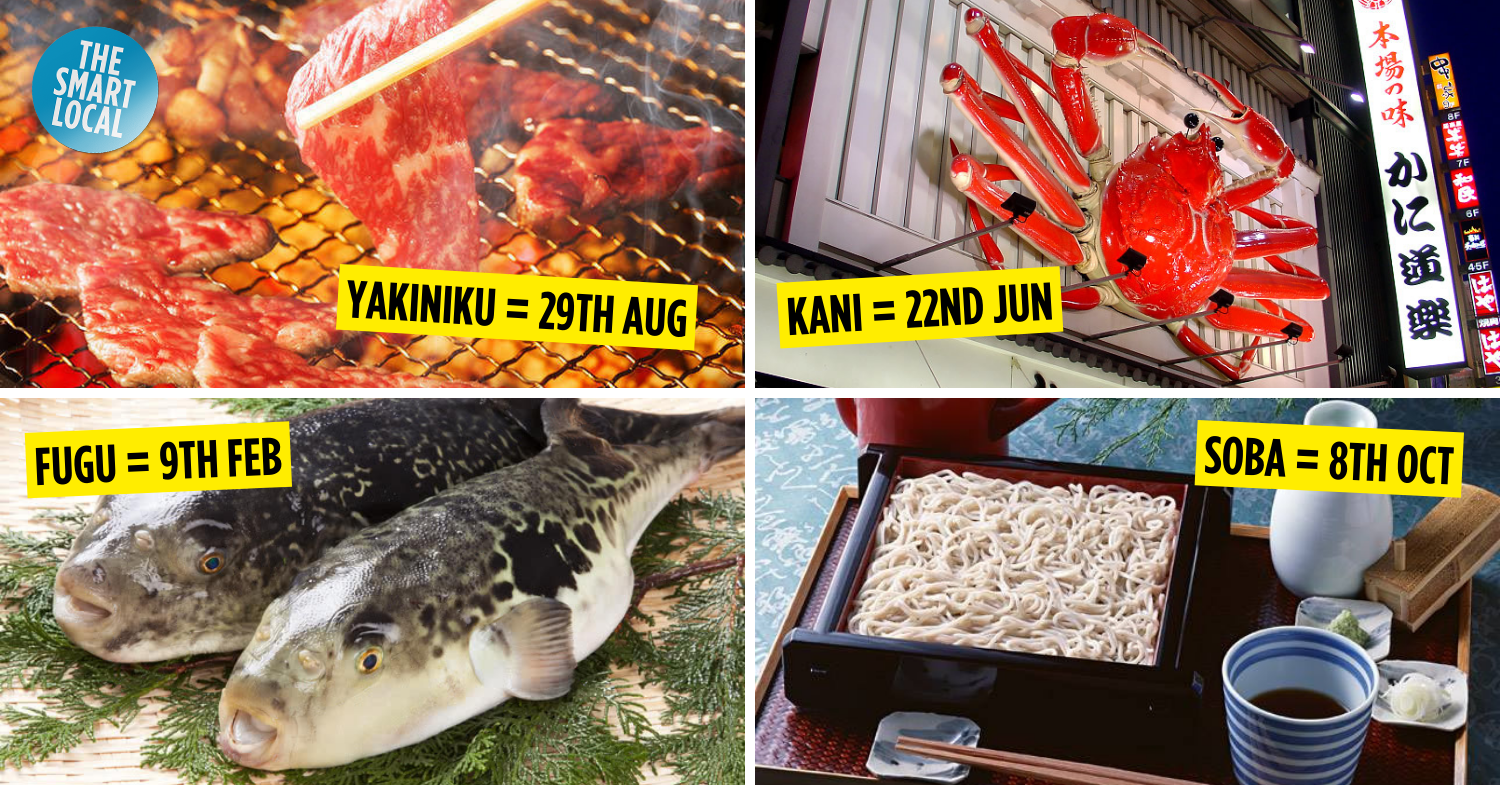Punny Japanese holidays about food
Japanese dates are really punny, especially since there are so many ways to read numbers. Pronunciations can be derived from Japanese, Chinese, English, and visual reinterpretations. It’s thus no surprise that Japan’s calendar would mark special days that sound like food. Here are 20 gastronomical Japanese holidays that come from puns to celebrate our love for food.
Table of Contents
- Punny Japanese holidays about food
- 1. 5th Jan: Strawberry Day (Ichigo no Hi)
- 2. 22nd Jan: Shortcake Day (Shottokekki no Hi)
- 3. 9th Feb: Pufferfish Day (Fugu no Hi)
- 4. 4th May: Whitebait Fish Day (Shirasu no Hi)
- 5. 29th May: Konjac Day (Konnyaku no Hi)
- 6. 22nd Jun: Crab Day (Kani no Hi)
- 7. 10th Jul: Natto Day (Natto no Hi)
- 8. 11th Jul: Ramen Day (Ramen no Hi)
- 9. 3rd Aug: Honey Day (Hachimitsu no Hi)
- 10. 7th Aug: Banana Day (Banana no Hi)
- 11. 31st Aug: Vegetable Day (Yasai no Hi)
- 12. 2nd Oct: Tofu Day (Tofu no Hi)
- 13. 4th Oct: Sardines Day (Iwashi no Hi)
- 14. 8th Oct: Soba Day (Soba no Hi)
- 15. 26th Oct: Kishimen Day (Kishimen no Hi)
- 16. 1st Nov: Sushi Day (Sushi no Hi)
- 17. 11th Nov: Salmon Day (Sake no Hi)
- 18. 11th Nov: Noodle Day (Men no Hi)
- 19. 29th Nov: Good Meat Day (Ii Niku no Hi)
- 20. 20th Dec: Yellowtail Day (Buri no Hi)
- Japanese holidays that celebrate food
1. 5th Jan: Strawberry Day (Ichigo no Hi)
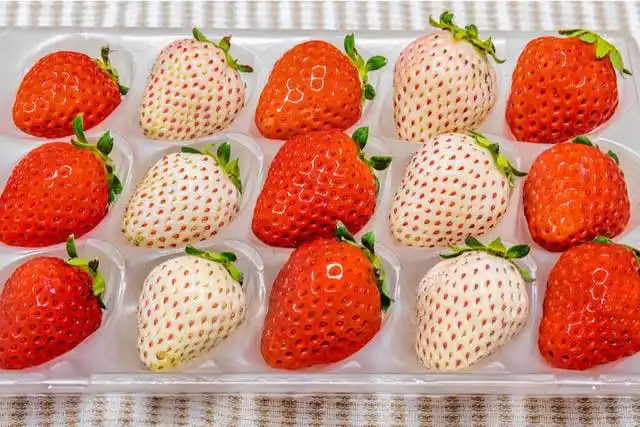
Image credit: TokyoTreat™
Japanese dates are read in the order of year-month-day, so 5th January can be shortened to “ichi-go”. “Ichigo” means strawberry in Japanese, and January happens to be peak strawberry season too.
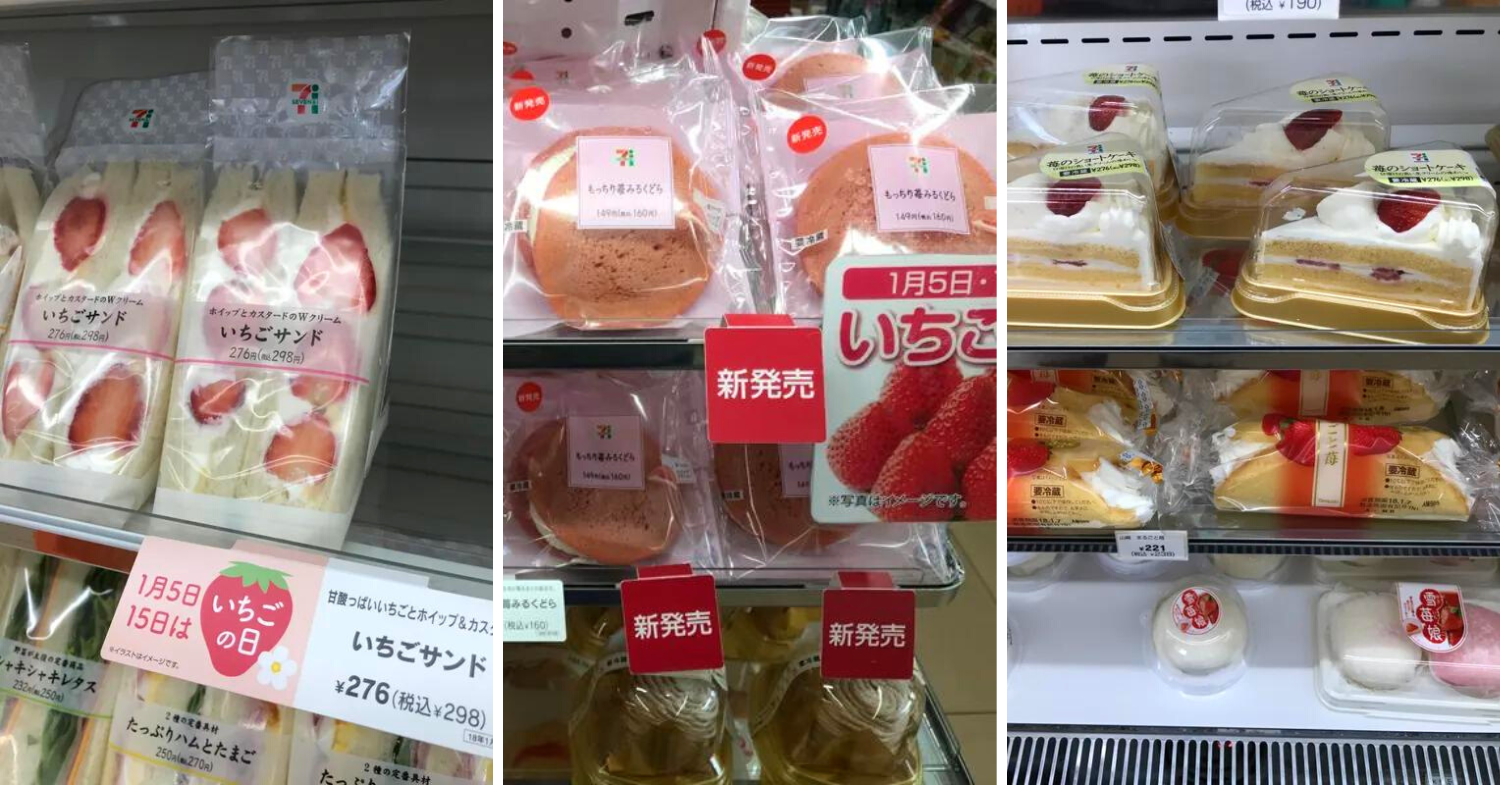
Image adapted from: genkidesu, genkidesu, genkidesu
On Strawberry Day, department stores organise strawberry sales and strawberry fairs. Convenience stores will also carry special items like strawberry sandwiches, dorayaki (どら焼き; fluffy pancakes with filling) and cakes.
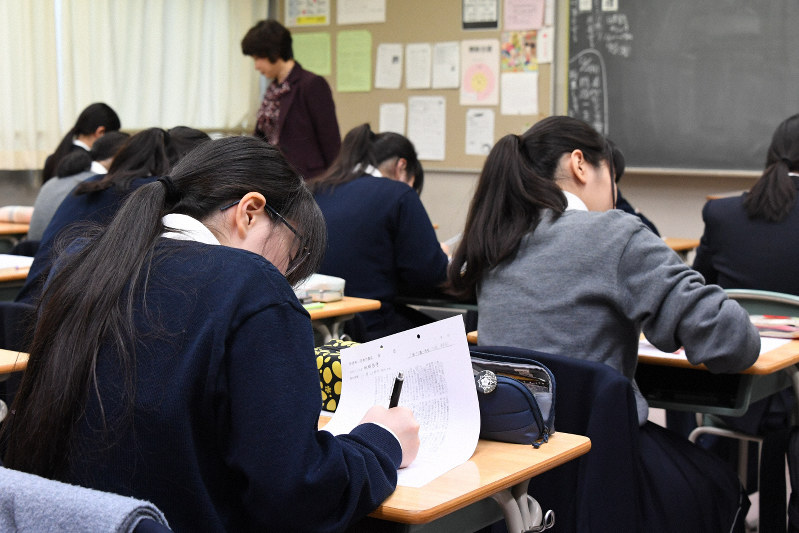
Image credit: Motohiro Negishi
Since the date coincides with the notoriously difficult Japanese high school entrance exam in mid-January, Ichigo no Hi also carries the meaning of cheering on the “strawberry generation – youths born post-1990s who are said to get bruised easily by life’s tribulations.
2. 22nd Jan: Shortcake Day (Shottokekki no Hi)
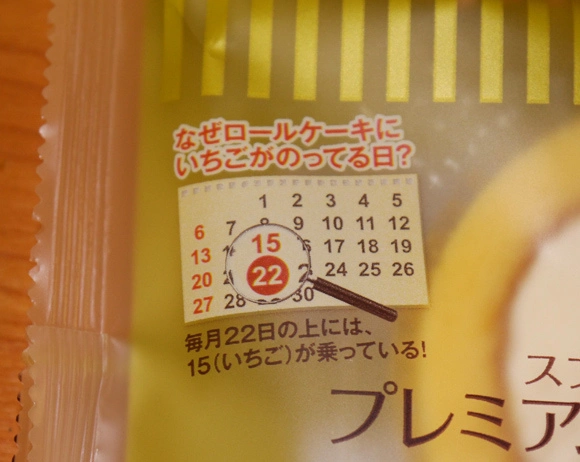
Image credit: Casey Baseel
Some retailers take the “ichigo” pun a step further. If you look at a calendar organised by week, the 15th is arranged on top of the 22nd—just like a strawberry sitting atop a shortcake.
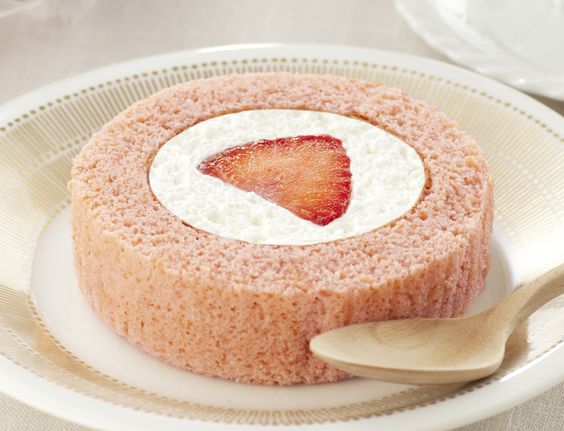
Image credit: Lawson, Inc.
That’s why shops promote strawberry shortcakes on 22nd January. One of Lawson’s best-sellers is the Premium Roll Cake, which is sliced from a full shortcake with a strawberry embedded in the centre.
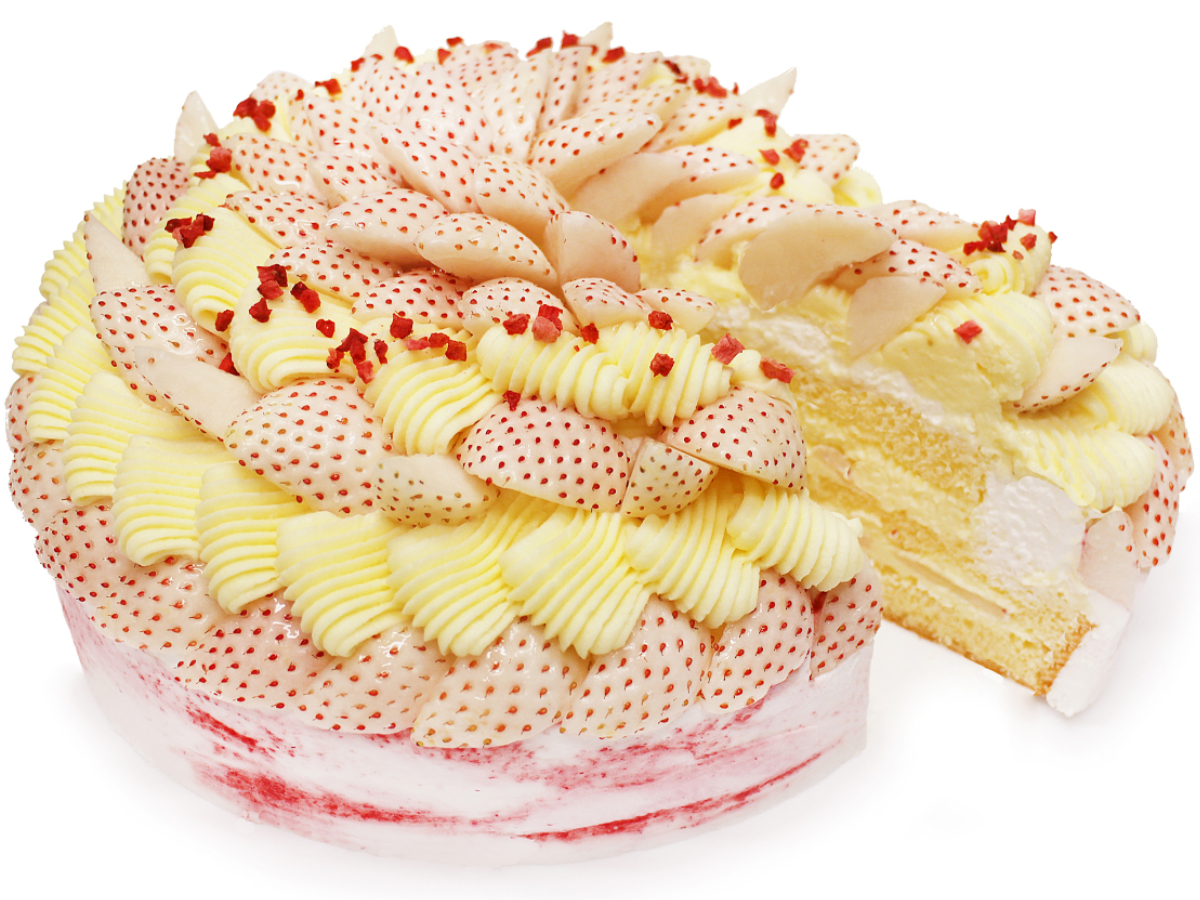
Image credit: Five Fox Co., Ltd. via PRTimes
Some cafes even create pastries from rare white strawberries. White strawberries are named as Hatsukoi no Kaori (初恋の香り; the scent of first love) in Japan as they’re juicier and sweeter than regular strawberries.
3. 9th Feb: Pufferfish Day (Fugu no Hi)
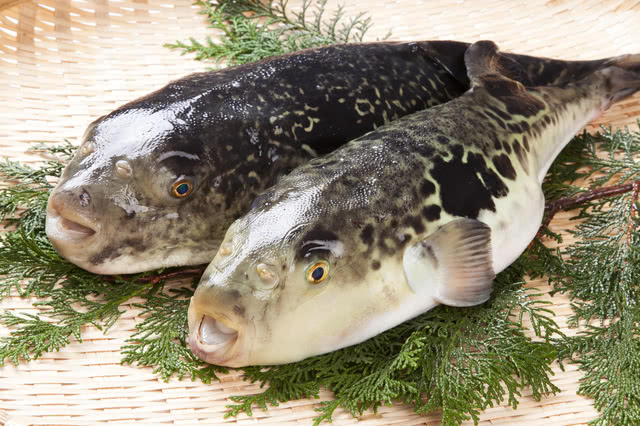
Image credit: HikoPhotography via Shutterstock
In Japanese, 2 can be referred to as “fu”. Pair that with 9 that’s pronounced “ku” and you’ll get something that sounds like “fugu”, the Japanese name for pufferfish.
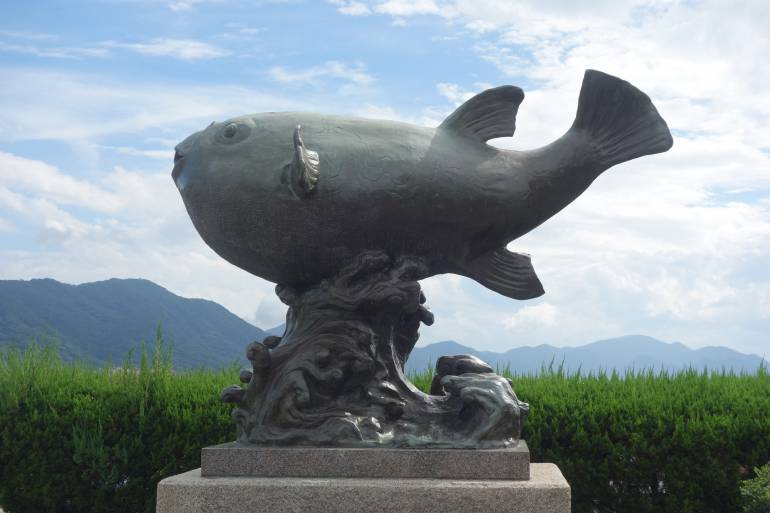
Shimonoseki’s pufferfish statue that overlooks the sea.
Image credit: Lily Crossley-Baxter via Japan Cheapo
The holiday was established in Shimonoseki, Japan’s fugu capital. Every year, on 9th February, fishermen in Shimonoseki head to Ebisu Shrine to pray for a good catch of the pufferfish that has greatly contributed to the economic development of their city.
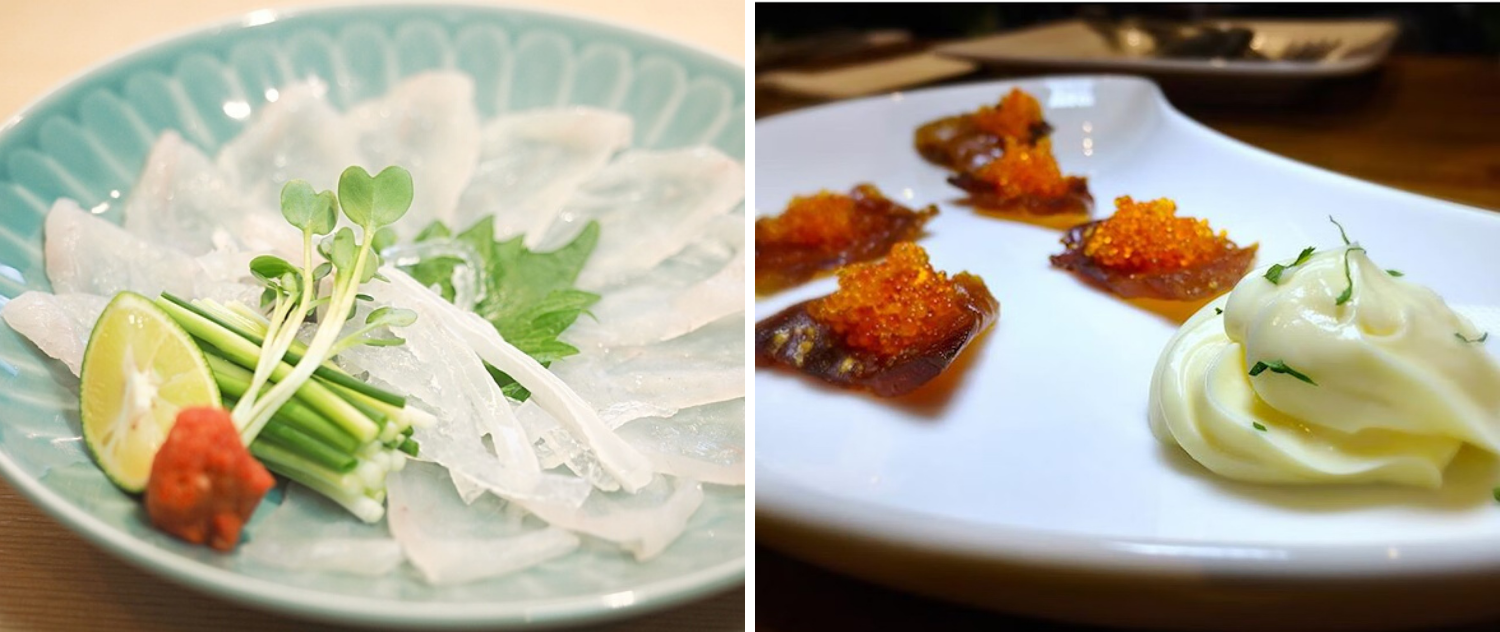
Image adapted from: favy, Ian Low via Burpple
February also happens to be egg-laying season for the pufferfish, which means it’s prime time to enjoy fugu delicacies like their meat and milt.
4. 4th May: Whitebait Fish Day (Shirasu no Hi)
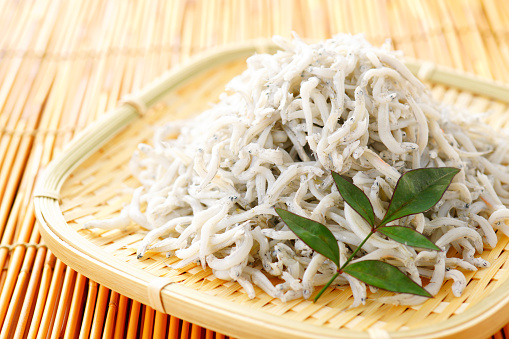
Image credit: KPS
Whitebait fish might not sound very familiar, but its Japanese name “shirasu” might jolt your memory of these tiny silver white fish that’s served in Japan as a side dish, toppings, or at times, a main dish on its own.
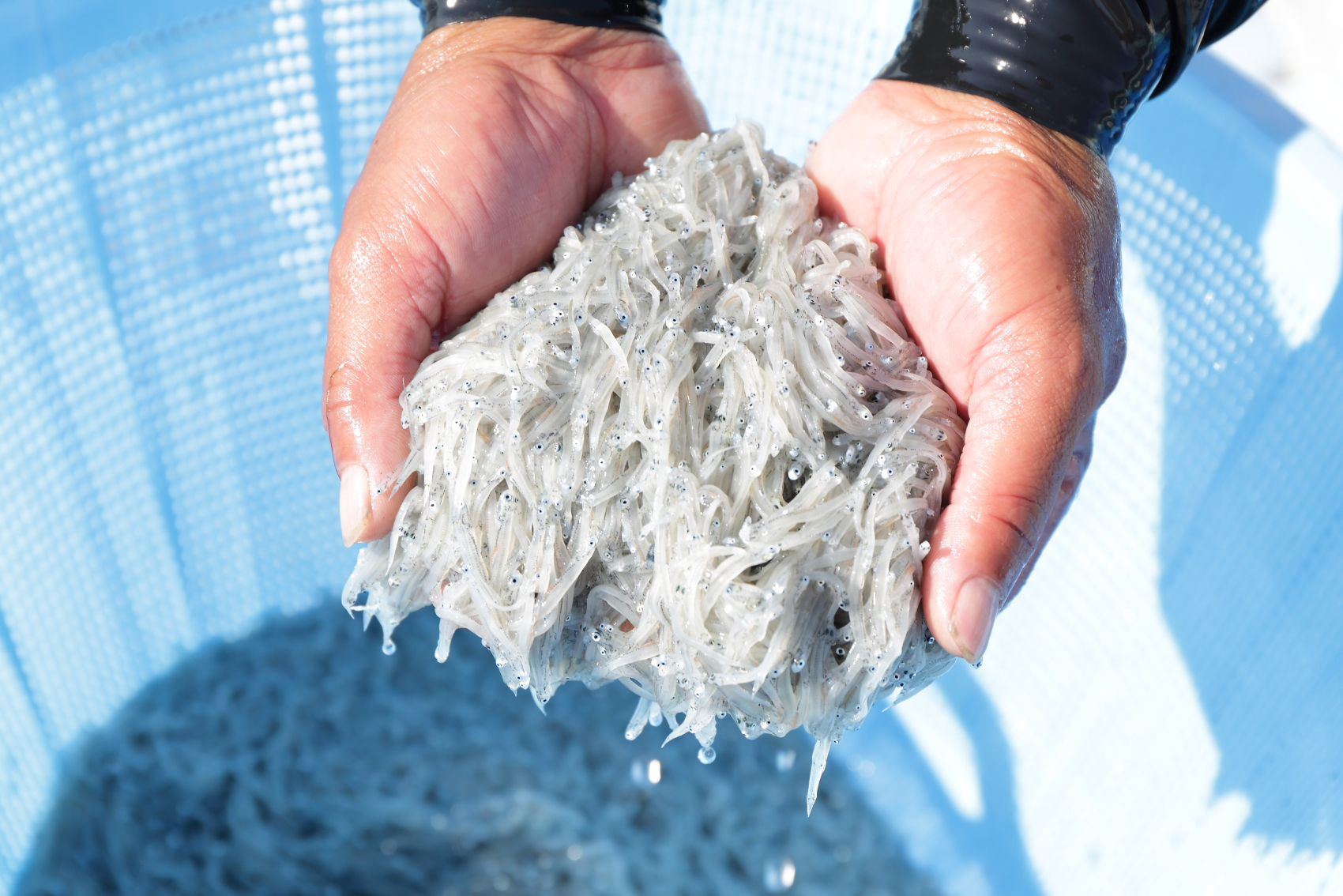
Image credit: SHUN GATE
4th May is Shirasu Day as the syllable “shi” sounds like Japanese for “4”, and whitebait fishing begins nationwide in May. This day also happens to be Greenery Day, so Shirasu Day doubles as a day to express gratitude to the fertile seas that provide us with high-quality food like whitebait fish.
5. 29th May: Konjac Day (Konnyaku no Hi)
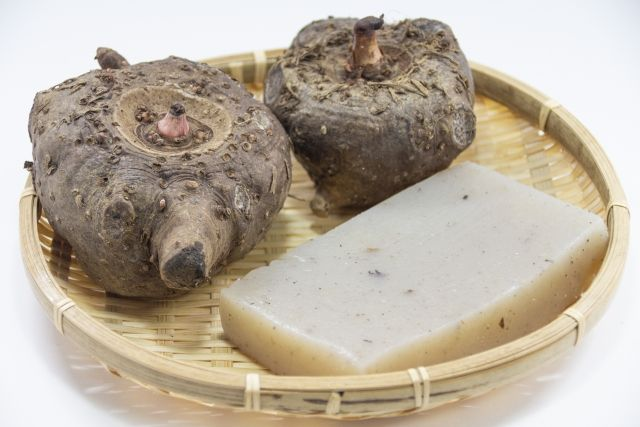
Image credit: RAMEN Z
29th May is written as “5-2-9”, which corresponds to the “ko-nin-ku”–1 syllable away from “konnyaku”. Konnyaku no Hi was established to promote the eating of konjac as a low-calorie, calcium- and fibre-rich health food.
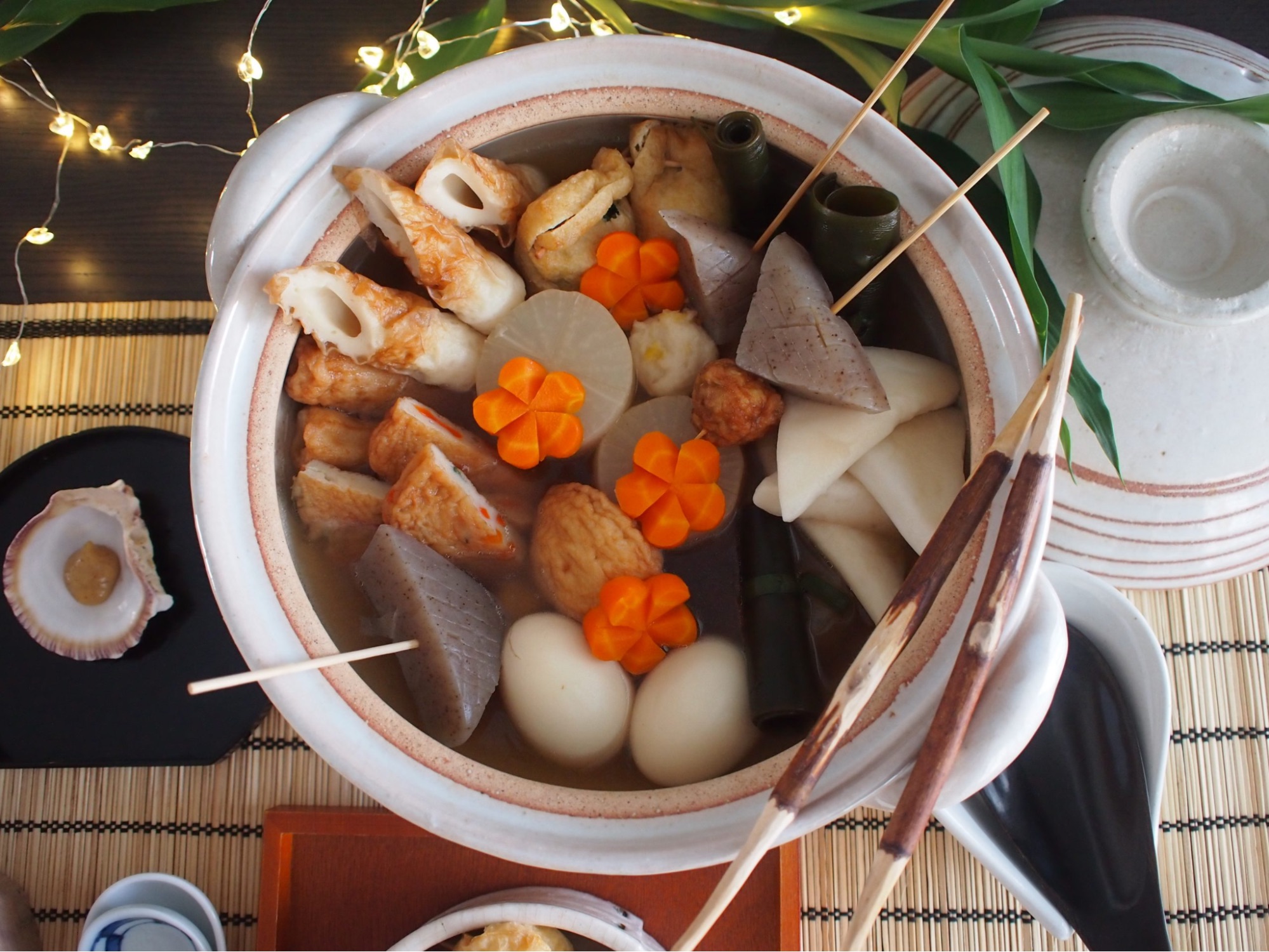
Image credit: Naoko Kashiwagi and Naoko’s Kitchen
Usually in the shape of a cuboid or triangular prism, this jelly-like, inexpensive ingredient enhances the texture and nutrition of hearty soup dishes. Konjac is so versatile that it’s also made into konjac noodles, colourful desserts and even beauty products.
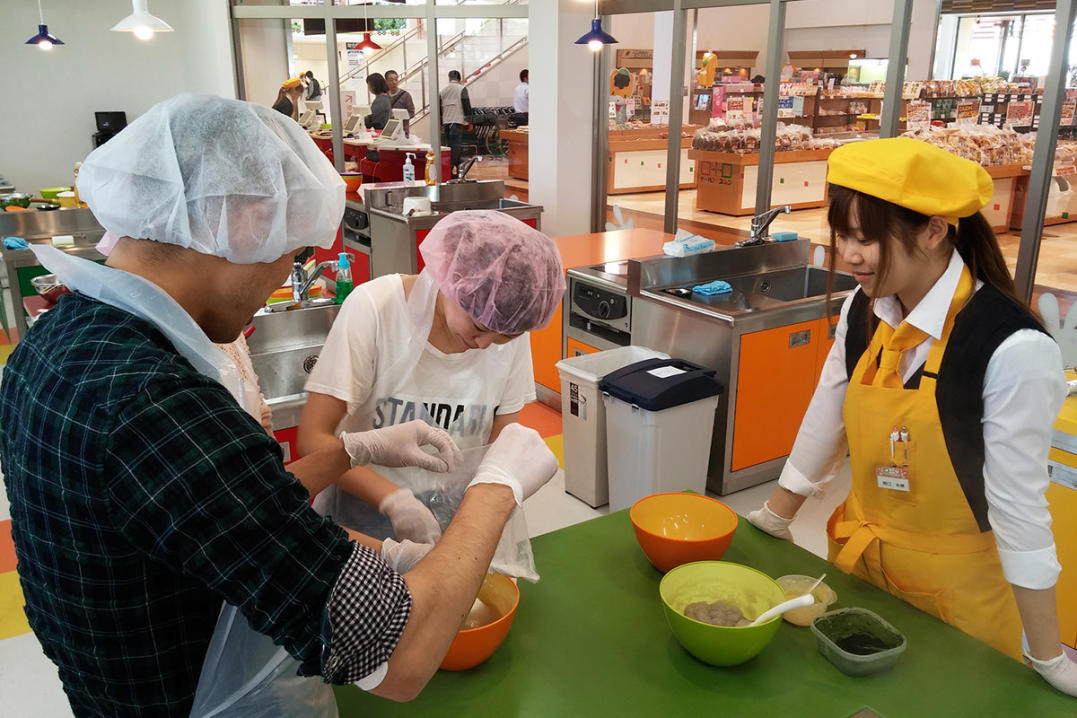
Image credit: Gunma Prefectural Government
Japan accounts for more than 90% of both production and consumption of konjac in the world. At Gunma’s Konnyaku Park, which holds the Gunma Konnyaku Festival, you can try your hand at making konjac dishes and enjoy an all-you-can-eat konjac buffet.
6. 22nd Jun: Crab Day (Kani no Hi)
“6” can be read as “ka”, and “2” takes the conventional reading of “ni”, forming “kani” which means crab in Japanese. But instead of 2nd June, Crab Day lands on 22nd June as it happens to be the first day of the Cancer horoscope sign, which is symbolised by a crab.
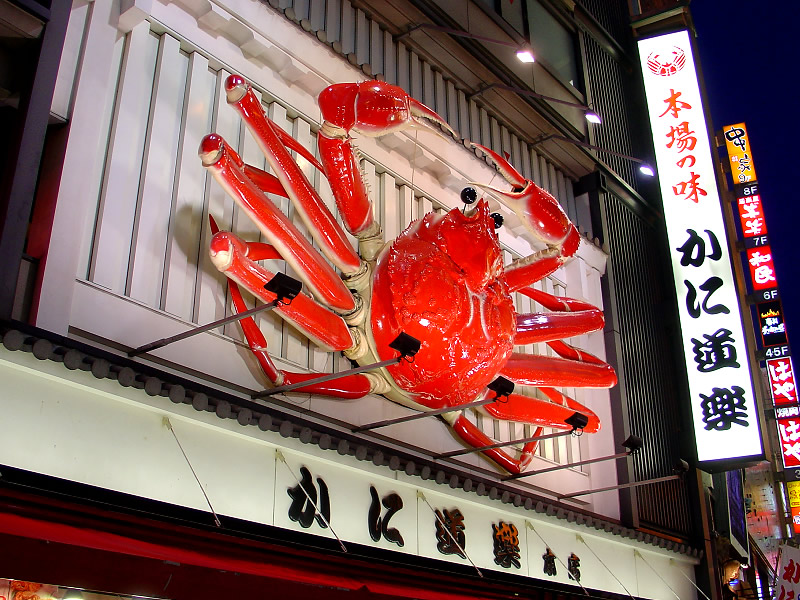
Image credit: JKT-c. via Wikipedia
Kani no Hi goes a long way. It was registered in 1999 by Kani Douraku, a crab specialty restaurant chain from Osaka that became nationally renowned for their humongous crab model that can wave its mechanical legs and pincers.

Image adapted from: @minamonana, @b_u_n_d_o, @anandsnow via Instagram
From crab sashimi to roasted and grilled crab, the long queues at Kani Douraku are definitely worth the juicy delicacies within.
7. 10th Jul: Natto Day (Natto no Hi)
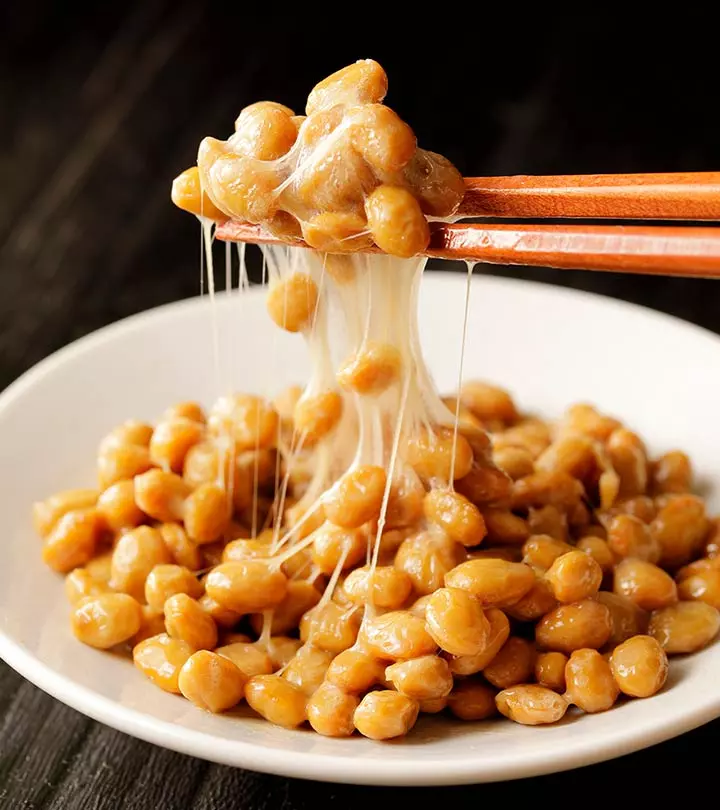
Image credit: K321 via Shutterstock
Combine the front halves of “7” (nana) and “10” (tou) and you’ll get something that sounds like “natto”. Natto, or fermented soya beans, is a common Japanese dish that surprises first-time eaters with its pungent smell and slimy texture.
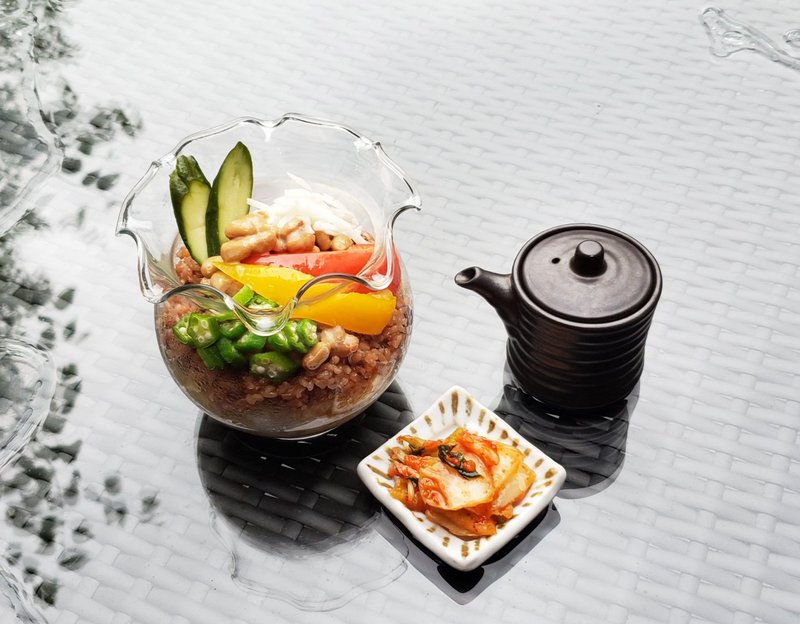
Image credit: Ritsuko
While some shun away from natto, others celebrate it with special events. Hakuju no Yu, a bath cafe, held soya bean-picking competitions where the winner will win a free meal of the manager’s handmade natto. It also sold “Natto Parfait Meshi” made up of brown rice and white rice, topped with vegetables and natto to look like a parfait.
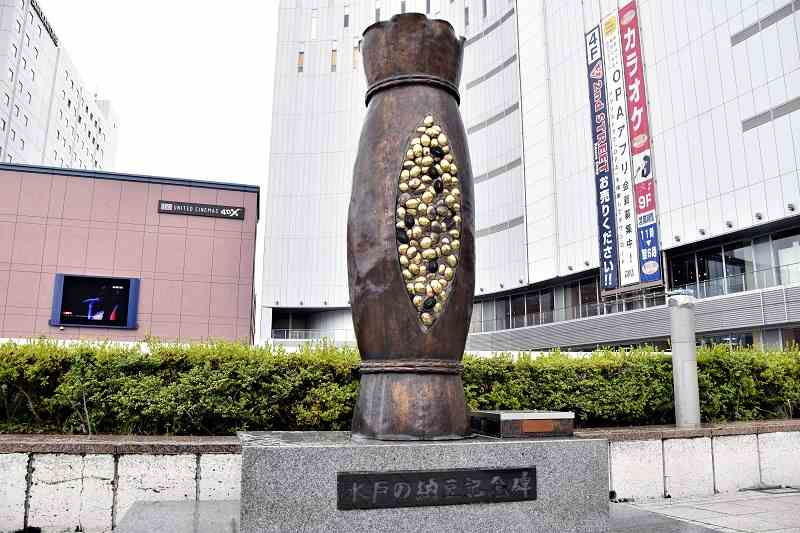
A monument of straw-wrapped natto in front of JR Mito Station.
Image credit: The Yomiuri Shimbun
In 2022, Mito City, the prefectural capital of Ibaraki Prefecture, designated Natto Day as their special day. As one of the top natto producers and consumers in Japan, Mito is also home to the most members of the Japan Natto Cooperative Society Federation.
8. 11th Jul: Ramen Day (Ramen no Hi)
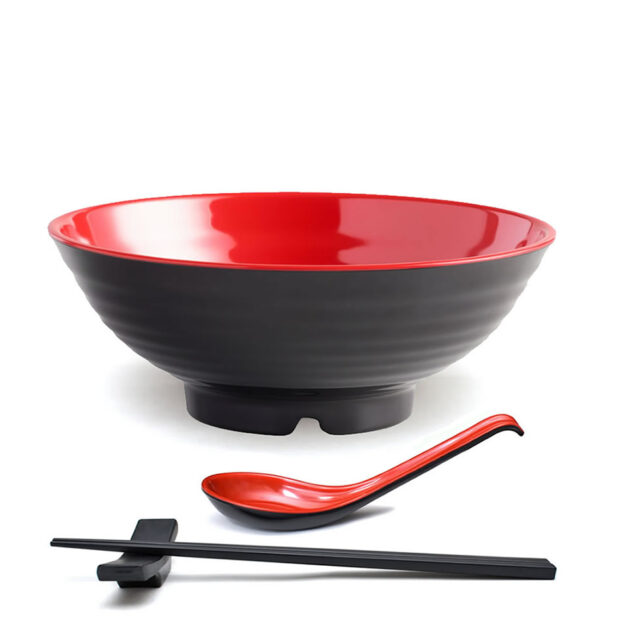
Image credit: Katachiware Japanese Style Tableware
Ramen Day comes from a visual pun rather than how the date is pronounced. The renge (蓮花; lotus petal-shaped ramen spoon with a curved hilt) looks like a “7” when it’s placed in the bowl, and chopsticks look like “11”.
11th July is also the birthday of Tokugawa Mitsukuni, a prominent 17th century feudal lord who is believed to be one of the first Japanese people to eat ramen. Today, ramen is such a popular food item that it is featured prominently in anime.
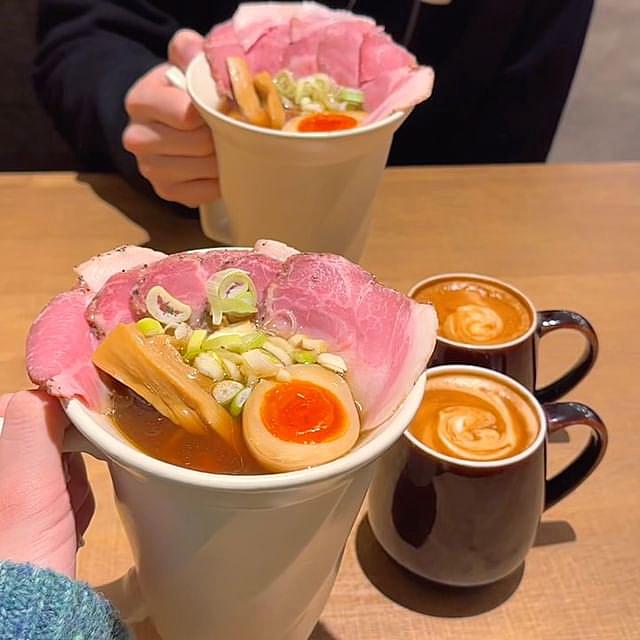
Image credit: @sy._____85 via Instagram
There are many different types of ramen with interesting regional differences, and novel innovations are coming up every day. In 2022, to celebrate Ramen Day, Cafe & Ramen JINMEN served ramen in a large mug with a handle to enable customers to drink the broth like a beverage.
9. 3rd Aug: Honey Day (Hachimitsu no Hi)
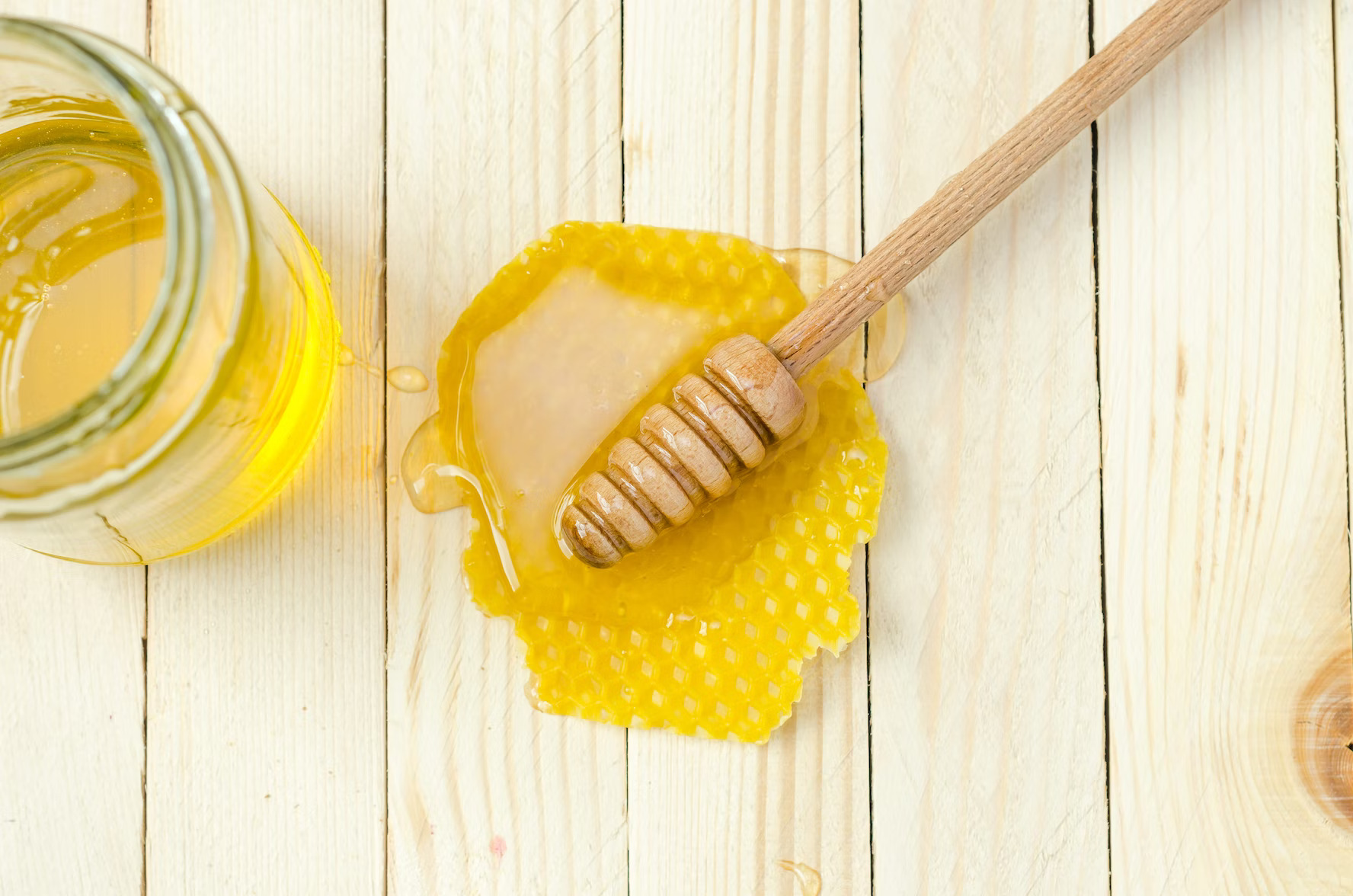
Image credit: Alexander Mils via Unsplash
Honey Day is a straightforward pun. It fuses “8-3”, which reads as “hachi-mitsu”, to form “hachimitsu”, the Japanese word for “honey”. Hachimitsu no Hi is a day to celebrate honey’s wholesome natural sweetness.
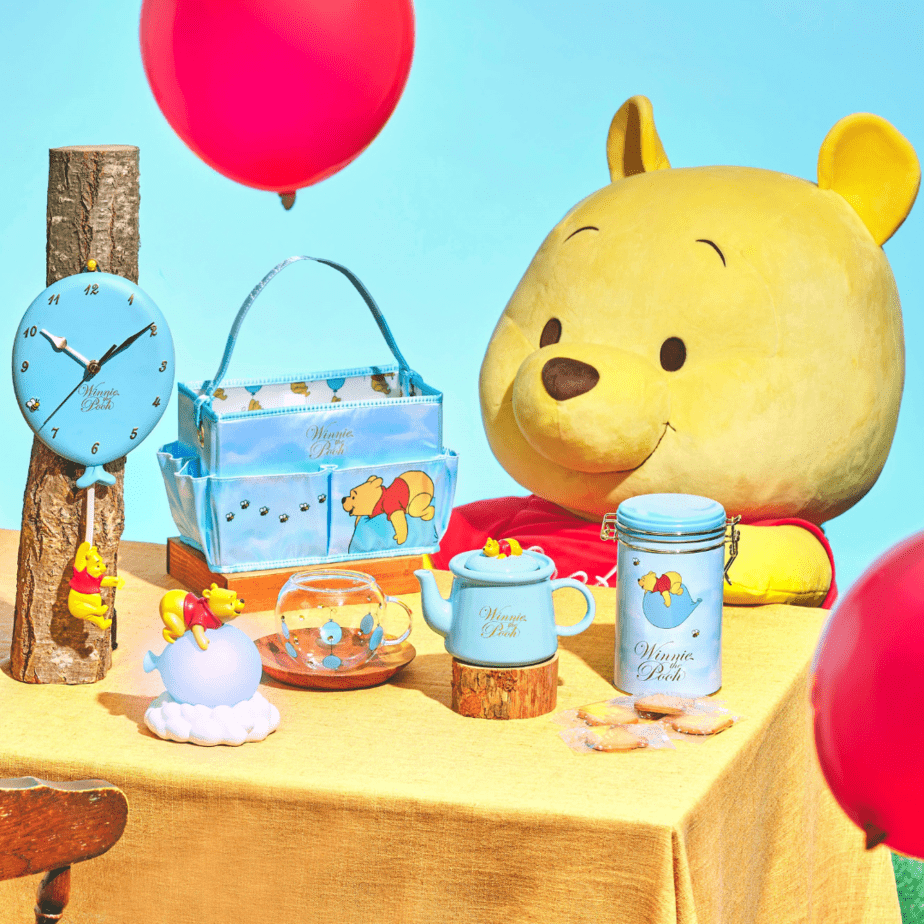
Image credit: Disney
Winnie the Pooh fans rejoice on this day as Disney Japan releases adorable merchandise featuring the biggest honey-loving character of all time.
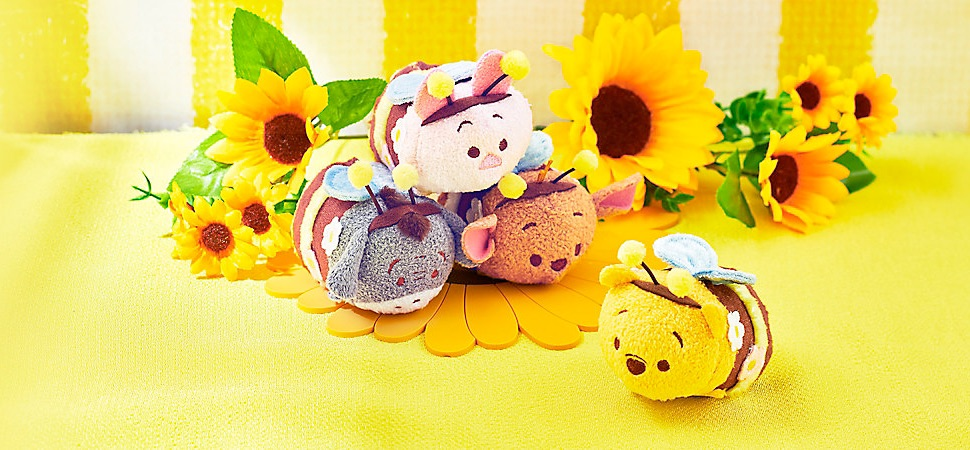
Image credit: MY TSUM TSUM
For 2021’s Honey Day, Disney released a tsum tsum set that reimagined Winnie, Piglet, Eeyore, and Roo as little bees.
10. 7th Aug: Banana Day (Banana no Hi)
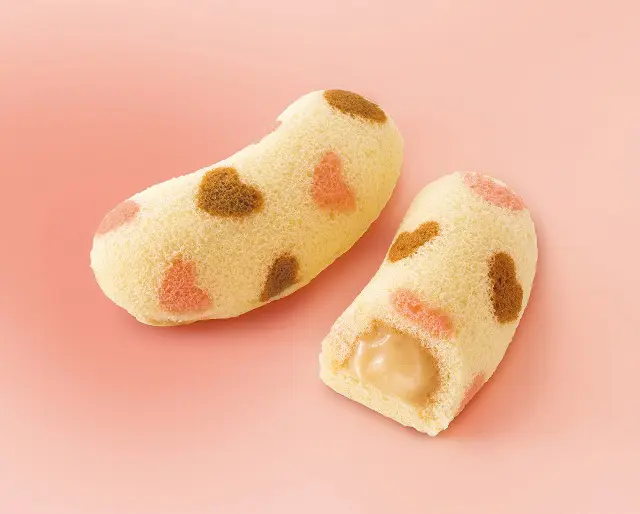
Image credit: Food in Japan.org
With “8” as “ba” followed by “nana” for “7”, 7th August reads as “banana”. Banana Day began as a commercial holiday to promote Tokyo Banana, a banana-shaped sponge cake filled with banana custard cream, as a souvenir for tourists in Tokyo. It’s the first souvenir cake to include “Tokyo” into its brand name.
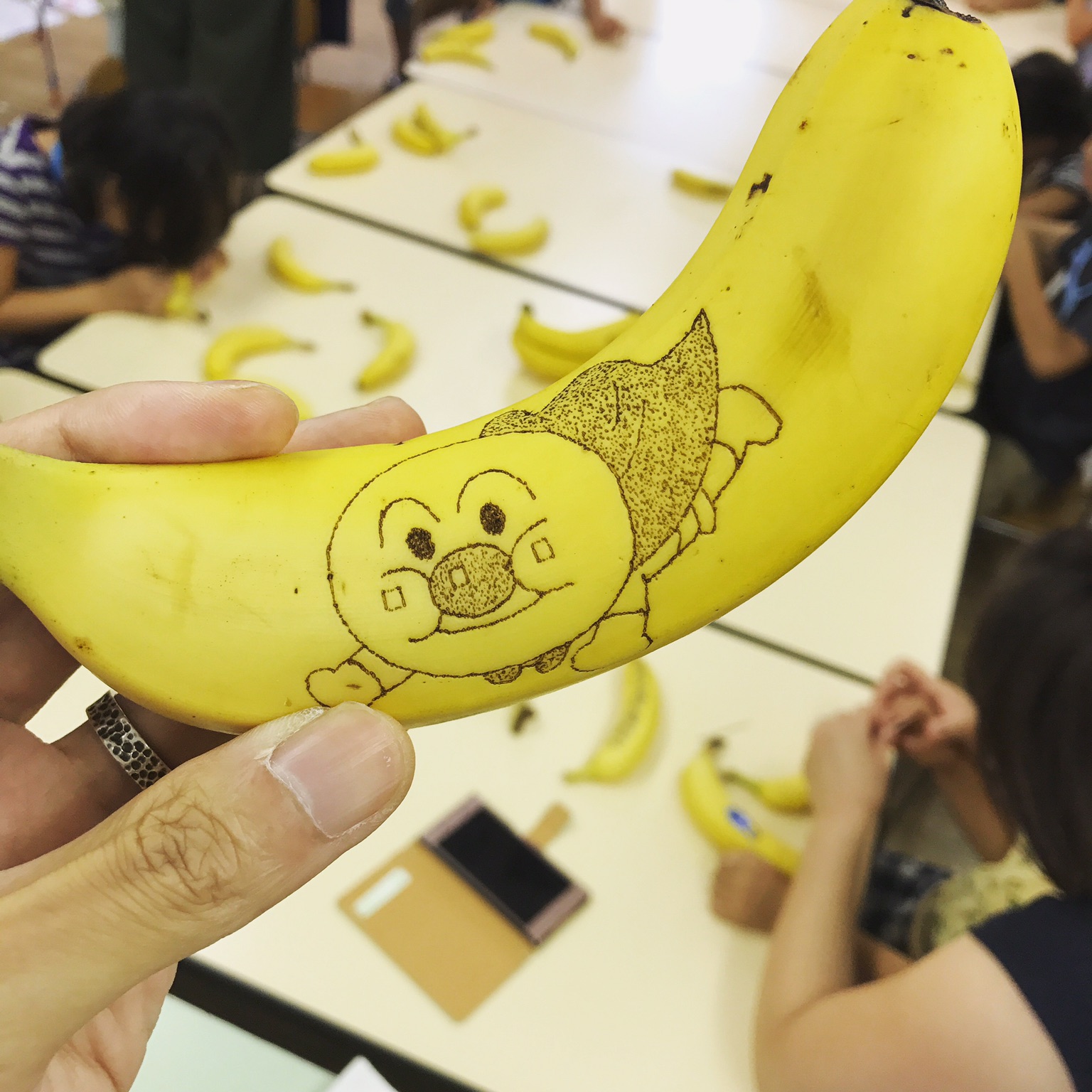
Image credit: End Cape
Now, Banana no Hi is a food education day in Japan. In 2014, an elementary school in Yokohama invited professional “bananartist” End Cape to teach students how to etch out designs on banana peels. Check out End Cape’s “bananart” blog, which showcases complex designs including dragons and peonies, as well as popular characters such as Pikachu and Naruto.

Image credit: Yoshio Tsunoda via Shutterstock
The Minions franchise has also become a cultural icon in the circle of banana appreciation. On Banana Day in 2019, the movie held a promotion event featuring minion plushies shaped like bananas, during which the Japan Banana Imports Association gave out free bananas.
11. 31st Aug: Vegetable Day (Yasai no Hi)

Image credit: Chantal Garnier via Unsplash
31st Aug is written as “8-3-1”, which corresponds to “ya-sa-i”, or vegetable in Japanese. The day was established in 1983 by 9 organisations as a joint effort to launch a campaign to encourage people to learn about and eat more vegetables .
On Yasai no Hi, the Japan Vegetable Sommelier Association holds free seminars to encourage children to maintain a balanced, fibrous diet. Their adorable tagline? Enjoy Vege-Fru Life!
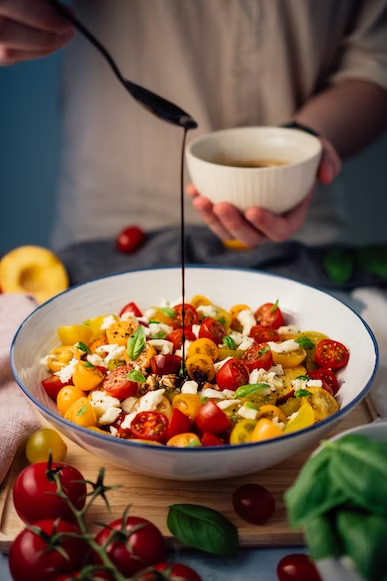
Image credit: Adam Bartoszewicz via Unsplash
Just like how Shortcake Day was derived from Strawberry Day, Vegetable Day also has creative spinoffs. 24th August is “Dressing Day” because it’s right above 31st August on a 7-day calendar, while Salad Week runs from 24th to 31st August between these two celebrations.
12. 2nd Oct: Tofu Day (Tofu no Hi)
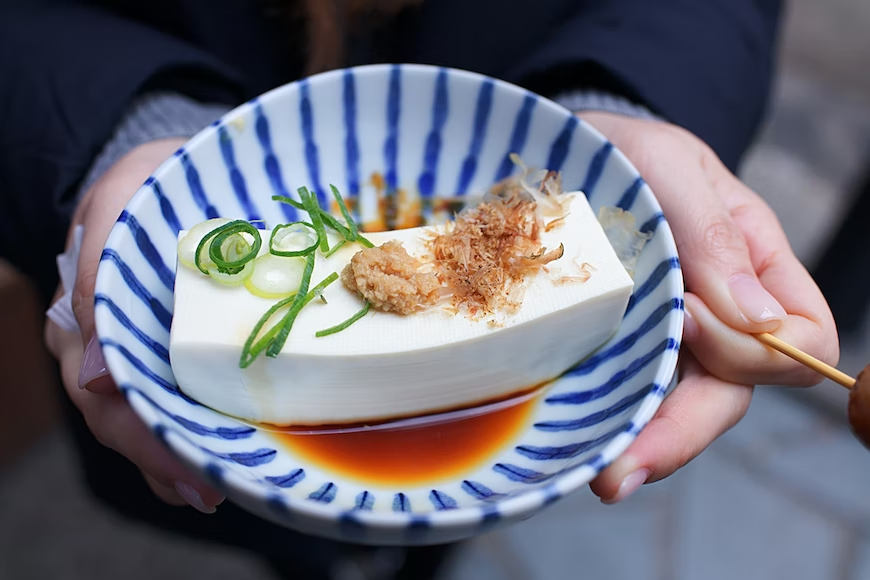
Image credit: Sherman Kwan via Unsplash
October is the start of many food-related holidays. 2nd Oct can be read as “tou-fu”, which sounds like tofu. Processed from soya beans, tofu is a high-quality protein substitute for meat, and is sometimes called hatake no oniku (畑のお肉; field meat) in Japan.
While Tofu Day is celebrated on one day per year, you’ll find tofu during all sorts of festivities. Tofu is served during important milestones including Coming-of-Age days, Obon Festival and New Year’s Day.
13. 4th Oct: Sardines Day (Iwashi no Hi)
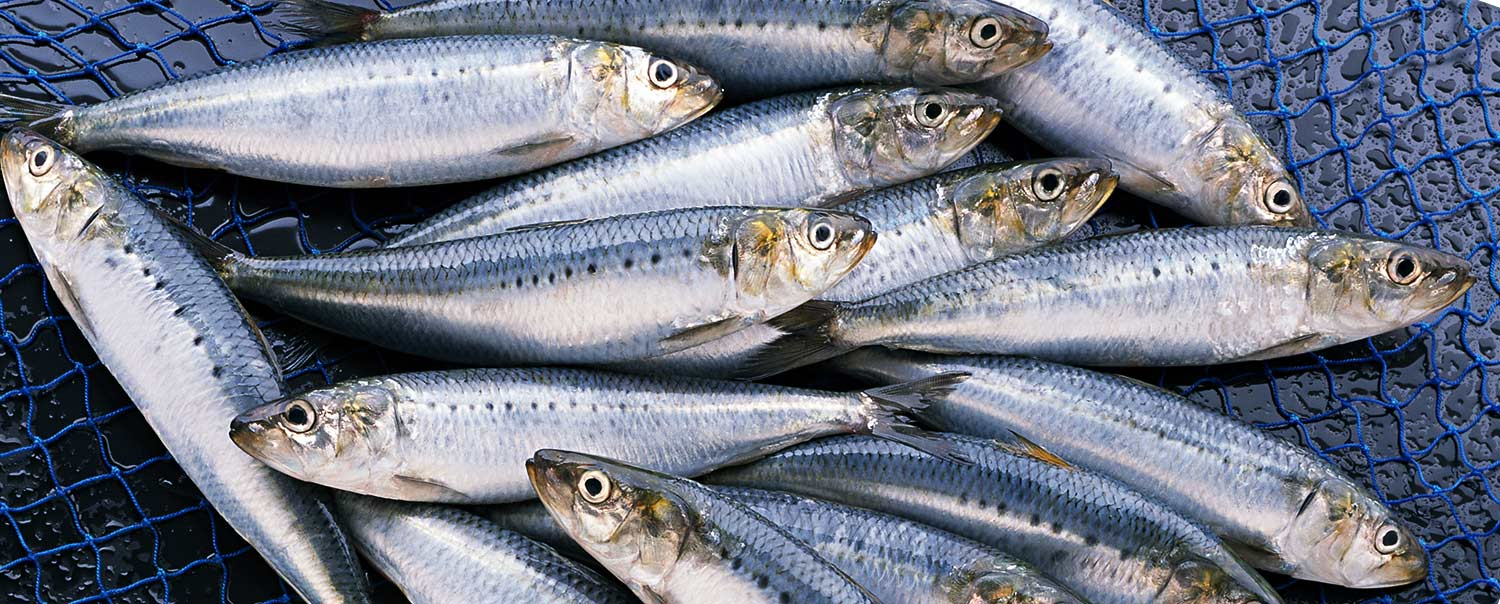
Image credit: Sushipedia
Written as “1-0-4”, 4th October is read as “i-wa-shi”, or “iwashi” for sardines. Iwashi no Hi was registered to promote sardines as cheap and tasty fish for customers, as sardines used to be only seen as feed for other fish.
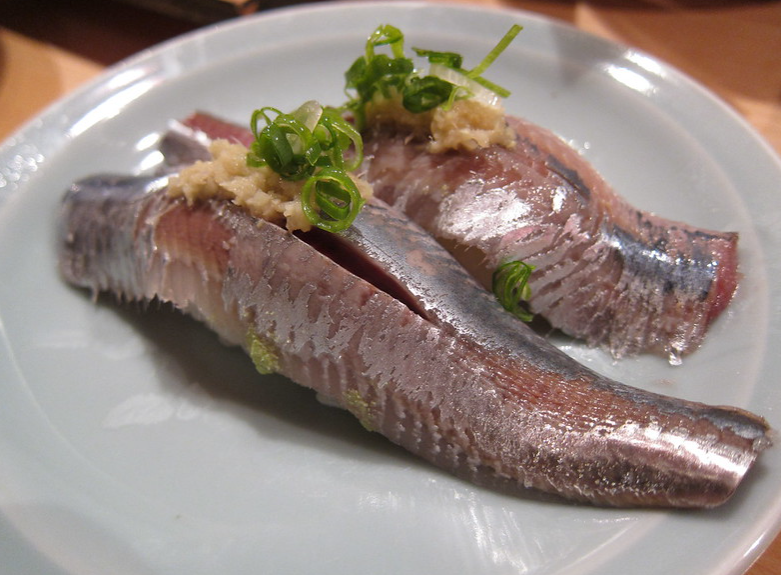
Image credit: takaokun via Flickr
Although the kanji for iwashi, “鰯”, is made up of the characters for “fish” (魚) and “weak” (弱), sardines pack a bunch of nutritional benefits. They’re said to improve memory, learning ability and calcium absorption while preventing lifestyle-related diseases such as stroke and hypertension.
While sardines are commonly eaten in the form of preserved canned food in other countries, Japan has developed iwashi as a popular sushi topping.
14. 8th Oct: Soba Day (Soba no Hi)
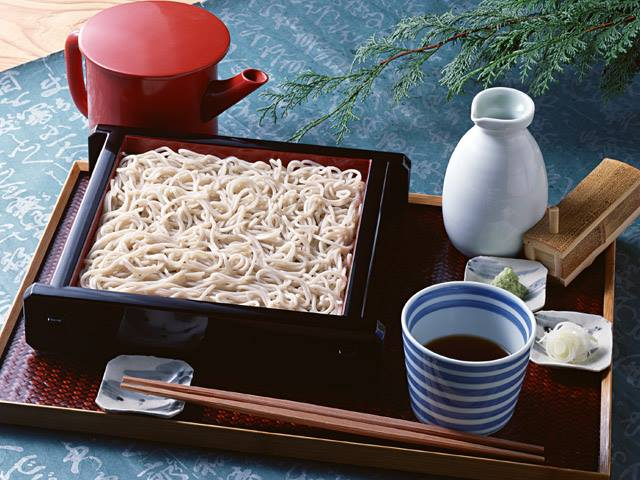
Image credit: Japan Culture Spotlight via Facebook
“10-8” can be read as “so-ba”, which sounds similar to “soba”, Japanese buckwheat noodles. These versatile noodles can be served in warm soup or atop ice with a dipping sauce on the side.
Every October, Matsumoto City holds the soba festival where participants can try their hand at making soba, and then enjoy it with sake and wasabi.
15. 26th Oct: Kishimen Day (Kishimen no Hi)
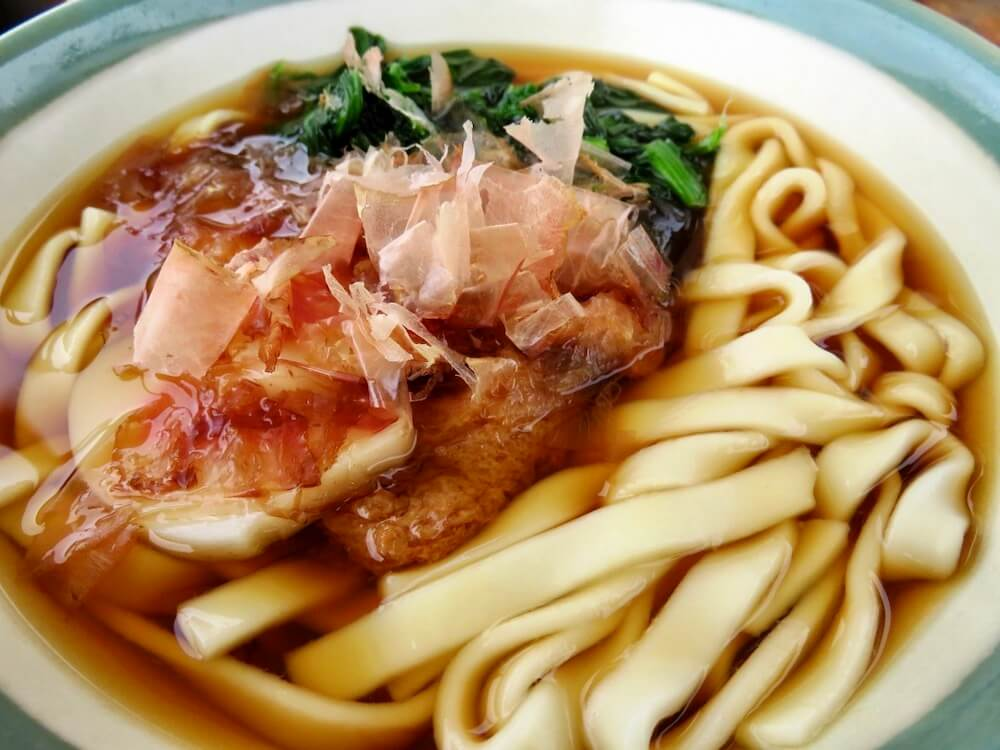
Image credit: SHACHIme
Break up “26” and you get “2-6”, pronounced as “tsu-ru”, an adjective that describes the smooth texture that is the characteristic of kishimen. This wide and flat noodle is best enjoyed in fall, which is at its peak production in October.
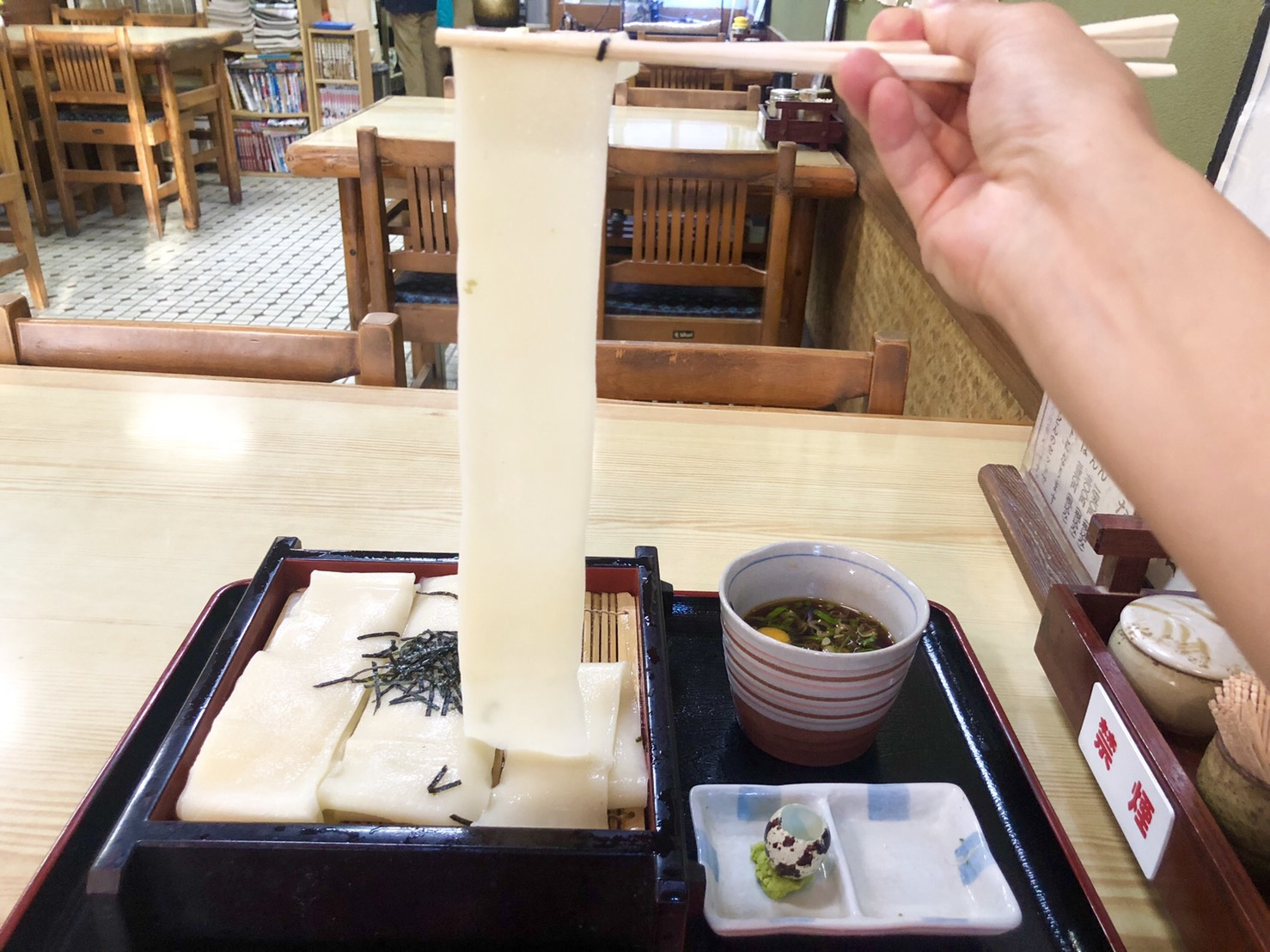
Image credit: Madoka
Kishimen is also called flat udon, as it’s a subtype of the more well-known round udon. Within the kishimen family, there are even flatter variations, such as Zaru Kishimen’s 5cm-wide specialty.
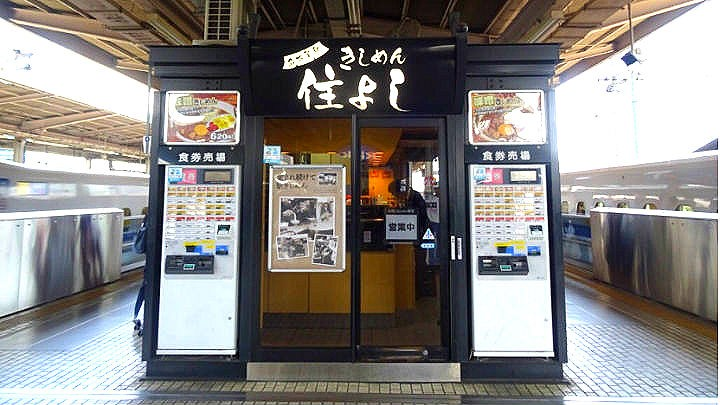
Image credit: Tabelog
In Nagoya, the prefecture of kishimen, these noodles are so popular that they’re even sold in train stations. Nadai Kishimen Sumiyoshi Noodle Shop on the Shinkansen Nobori train platform is an interesting sight in Aichi Prefecture.
16. 1st Nov: Sushi Day (Sushi no Hi)
Sushi Day is inspired by a visual pun. If you turn your head sideways to look at “1/11”, the date resembles multi-layered nigiri-sushi (握り寿司; sushi that can be gripped with one hand). November is also the period of rice harvest and particularly sumptuous seafood.
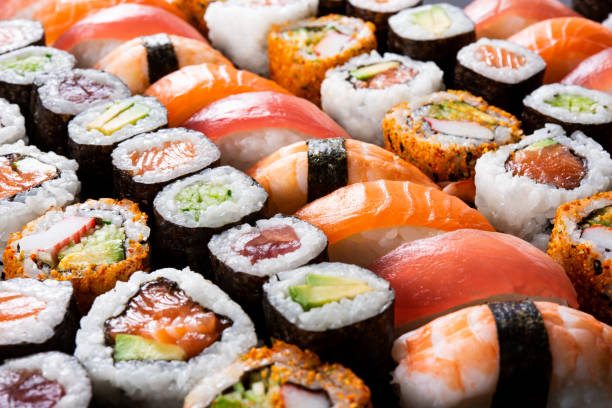
Image credit: Ridofranz via iStock Photos
Sushi no Hi was established in 1961 by the All-Japan Sushi Association as “Thanksgiving Day” associated with sushi. It also marks an important time in history when the nationwide prevalence of the refrigeration system enabled the storage of fresh seafood for the commercial sale of sushi.
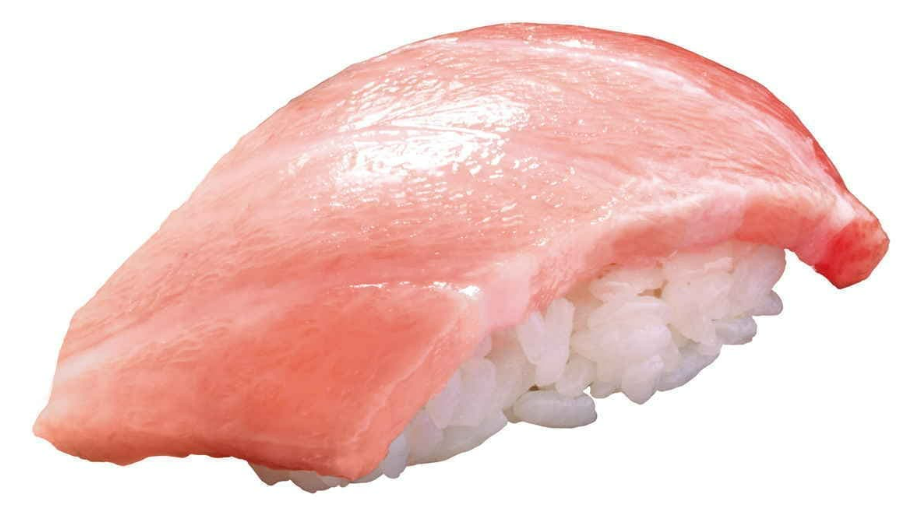
Image adapted from: internetcom K.K. (Japan)
On this day, sushi chains provide discounts for selected menu items. For instance, Sushiro offers one piece of complementary honmaguro otoro (本鮪大とろ; supreme tuna belly) per customer.
17. 11th Nov: Salmon Day (Sake no Hi)
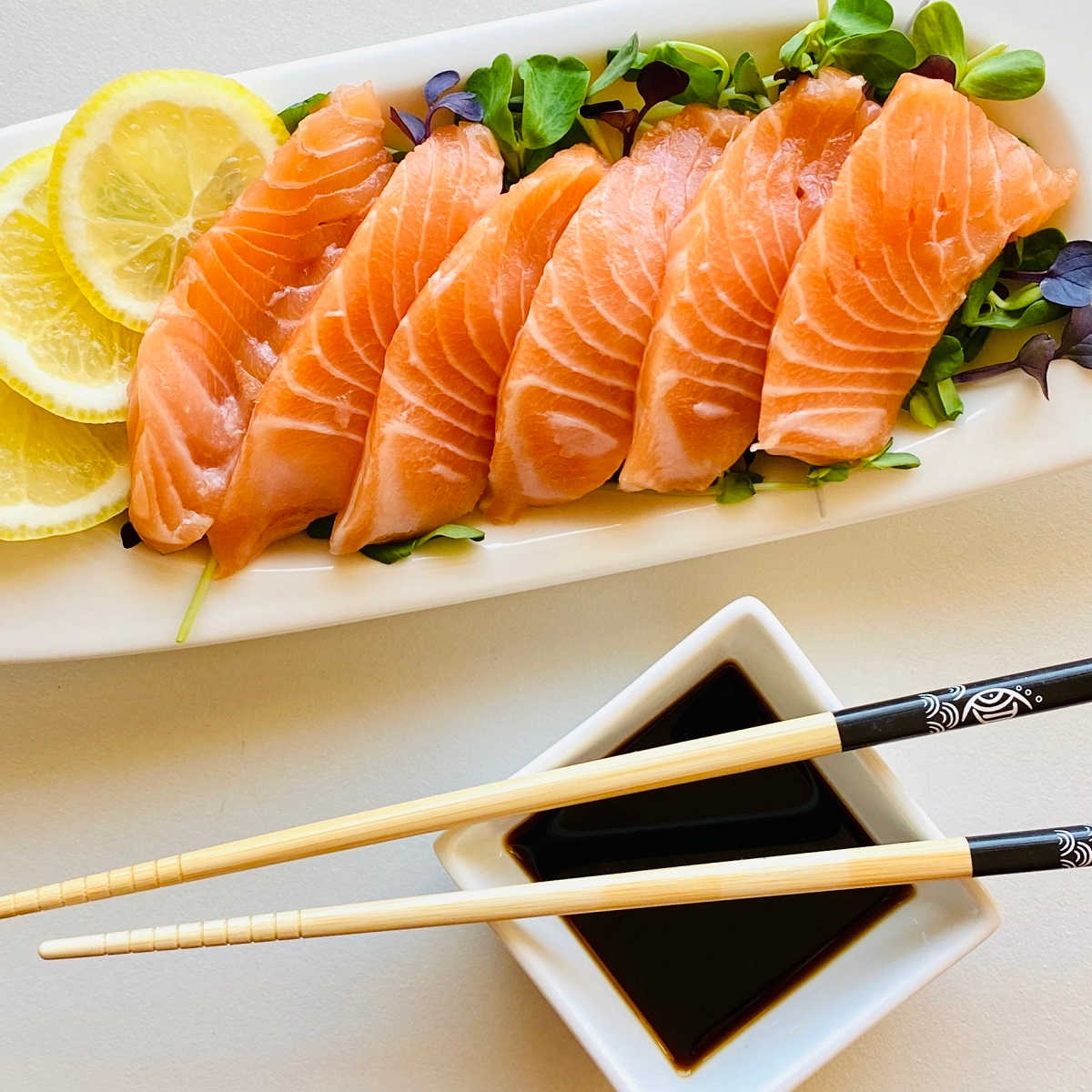 Image credit: AUBREY’S KITCHEN
Image credit: AUBREY’S KITCHEN
Salmon Day is a bit of a brain teaser. The kanji for 11th November is “十一十一”, which when stacked from top to bottom, forms the character “圭”. “圭” is the right half of the kanji for salmon, which is “鲑”. Also, November is the perfect time for fatty and thick salmon that offer the best taste and nutritional value.
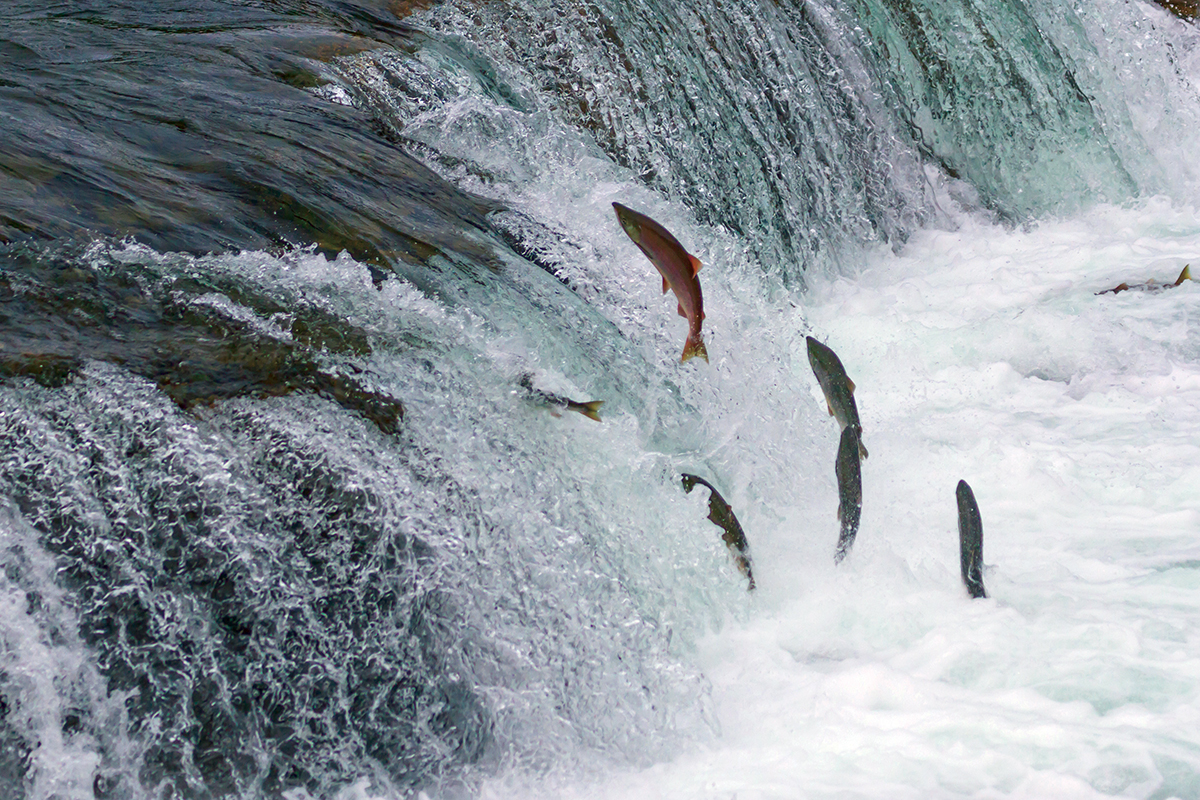
Image credit: Sekar B via Shutterstock
Sake no Hi was proposed by Niigata Prefecture’s Murakami City, which is also known as “Salmon Town”. The city is said to have discovered the pattern of salmon returning to their “birth river”, and is credited for pioneering the artificial hatching and breeding of salmon.
On Salmon Day, salmon business owners in Murakami City gather at Fujimoto Shrine. The chief priest conducts a ritual to comfort the soul of the salmon freshly bought from the Miomote River, and to give thanks to the salmon’s blessings.
18. 11th Nov: Noodle Day (Men no Hi)
Also on 11th November is Noodle Day, which similarly plays with visual puns. Written in Arabic numerals, “1111” looks like long and thin noodles lying neatly in a bowl.
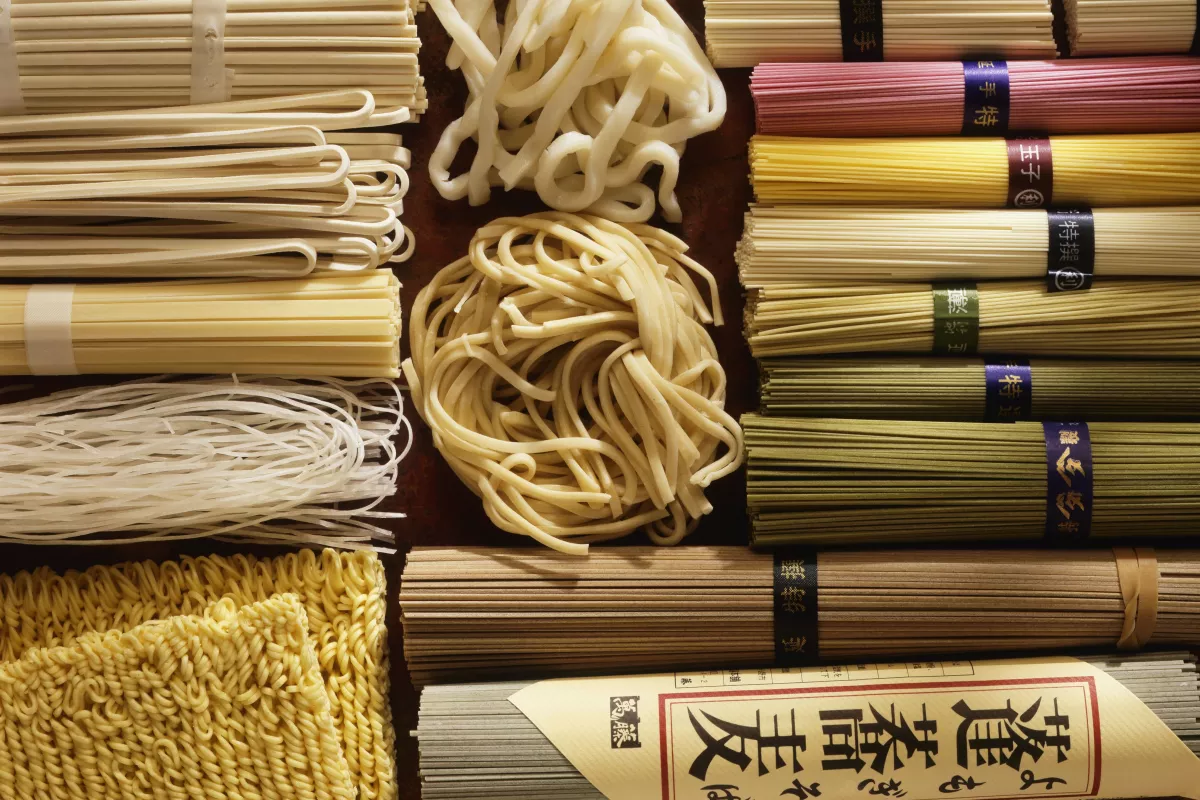
Image credit: S.PELLEGRINO & ACQUA PANNA
Noodles are eaten during festive occasions in Japan as their length symbolises longevity. In fact, noodles are so closely related to everyday life that some suggest celebrating a type of noodle on the 11th of every month. Perhaps 11th July’s Ramen Day is the starting point.
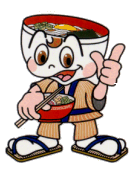
Image credit: Zenmenren
The noodle-loving mascot of Zenmenren, the group that registered Men no Hi, proposes that “11” also be read as “ii”, which means “good” in Japanese. Together, 11th November makes “Good Noodles Day”.
19. 29th Nov: Good Meat Day (Ii Niku no Hi)
Since “11” looks like the characters for “good” in Japanese, while “2” and “9” form “ni-ku” which means meat, 29th November is Good Meat Day.
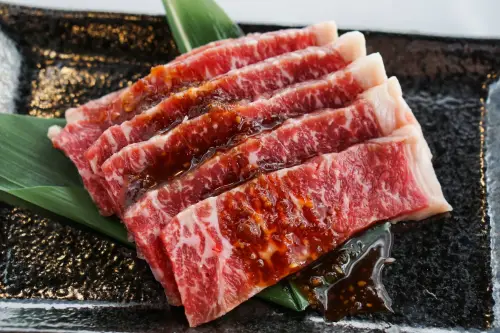
Image credit: cravedfw
On this day, Japanese supermarkets, fast food chains, and BBQ joints go ham on meat discounts.
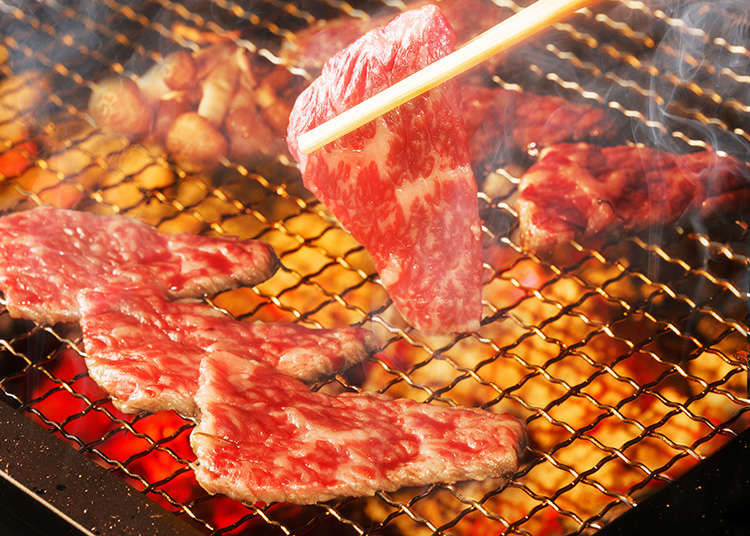
Image credit: LIVE JAPAN
Because the association of “29” with “niku” is too good to give up, the 29th of other months have also been claimed for punny meat-related holidays. For example, 29th August is Grilled Meat Day (Yakiniku no Hi) because “8” can be read as “ya”.
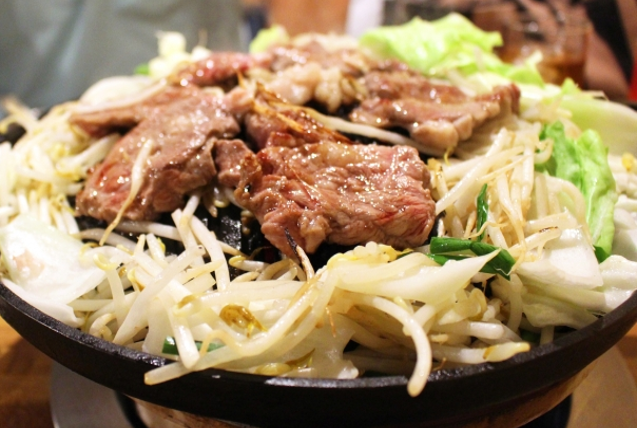
Image credit: Ministry of Agriculture, Forestry and Fisheries of JAPAN via Facebook
29th April is Mutton Day (Yooniku no Hi), as the reading of “4” as “yo” sounds similar to “yō”, which means sheep in Japanese. The most interesting rendition is 29th February, a special day which only occurs once every four years and thus is named the Leap Day of Meat (Uruo Niku no Hi).
20. 20th Dec: Yellowtail Day (Buri no Hi)
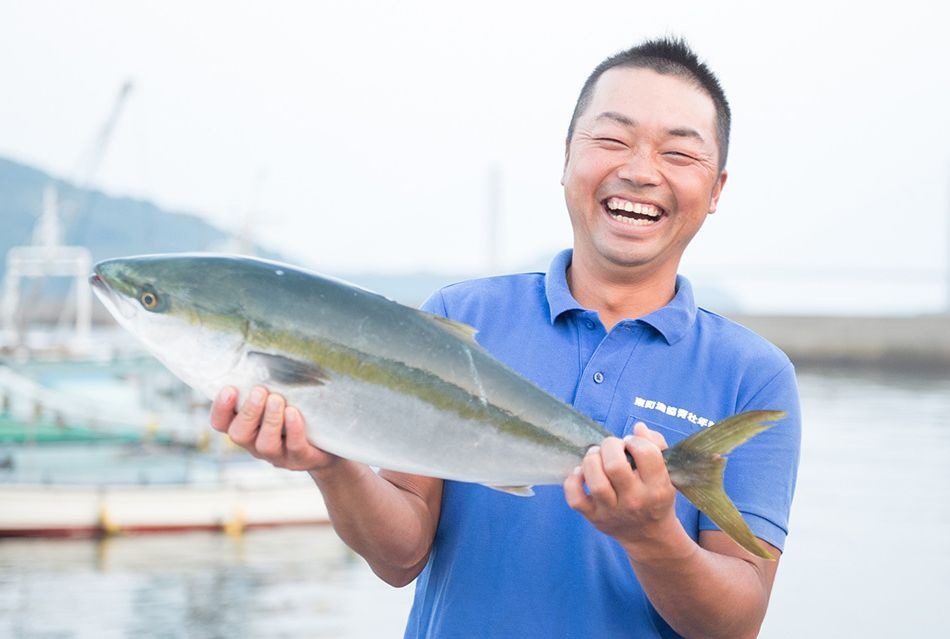
Image credit: The Government of Japan
Rounding off this list of food-related Japanese holidays is Yellowtail Day. In Japan, yellowtail fish take on different names as they grow larger. Buri is the largest variation of yellowtail fish. “2” can be pronounced “bu”, and the ring-shaped “0” inspires the reading “rin” for wheel (輪). Together, “20” sounds similar to “buri”.
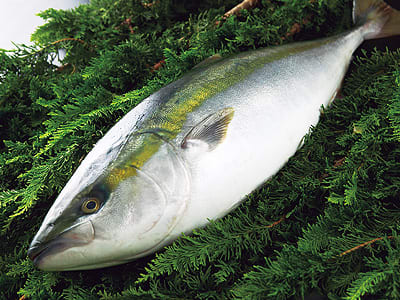
Image credit: Weblog
The right half of the kanji for “buri”, “鰤”, shares the same character, “師”, as “師走” (shiwasu), the old Japanese name for December, when everyone was so busy at the end of the year that even monks (師) will run (走).
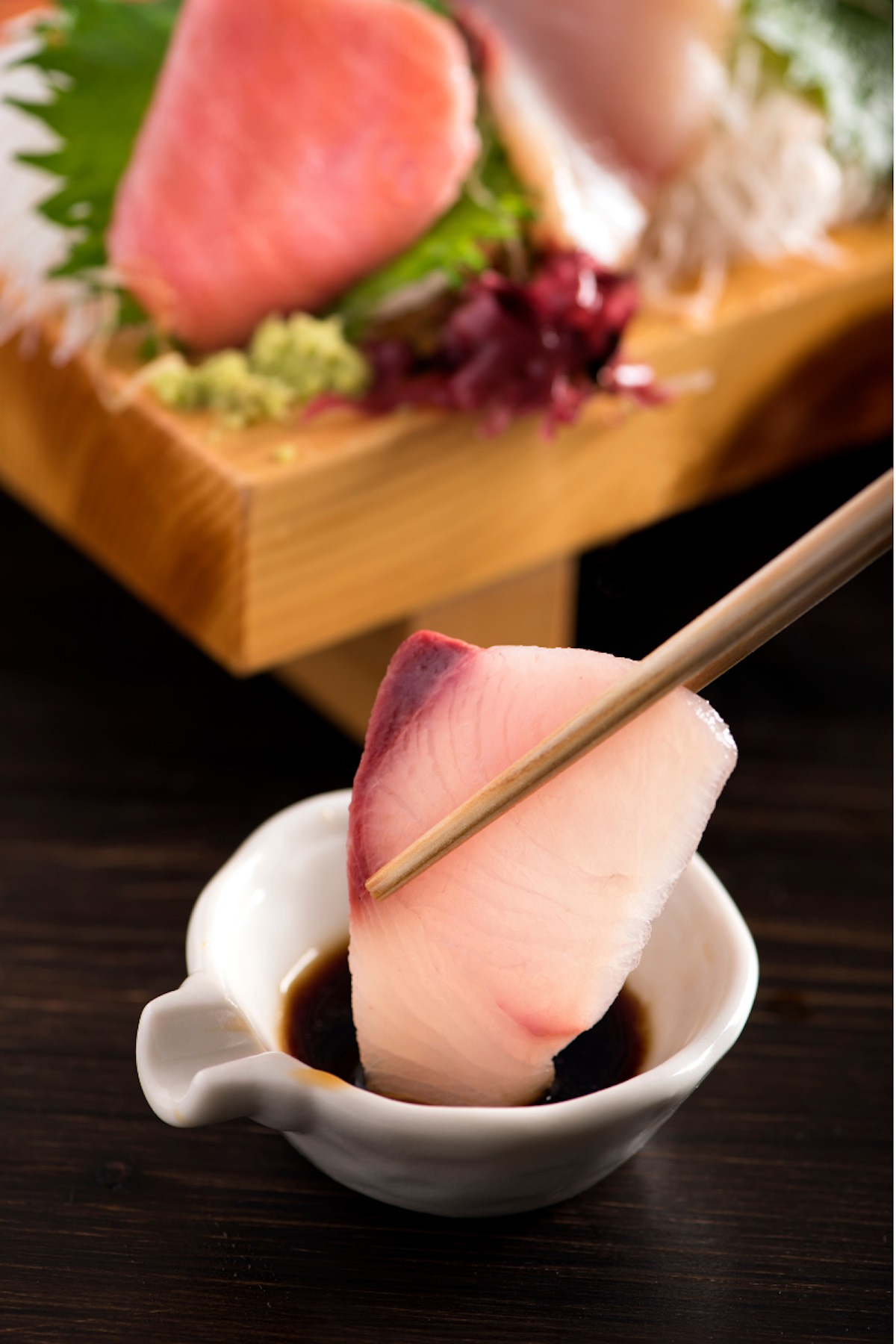
Image credit: IZZYCOOKING
December is also said to yield the most flavourful yellowtail. The fish is served as a symbol of success at New Year feasts, right round the corner after Buri no Hi.
Japanese holidays that celebrate food
Japan’s food-related holidays are not only punny, they’re also steeped in history and continue to impact modern life – sometimes in the form of yummy discounts.
For more on life in Japan, our Japanese supermarket guide provides secret hacks to getting the best deals. Alternatively, check out these everyday mysteries in Japan you might have wondered about, 15 weird Japanese food combinations, or 10 unusual Japanese foods.
Cover image adapted from: LIVE JAPAN, JKT-c., Embassy of Japan in Bangladesh, HikoPhotography
